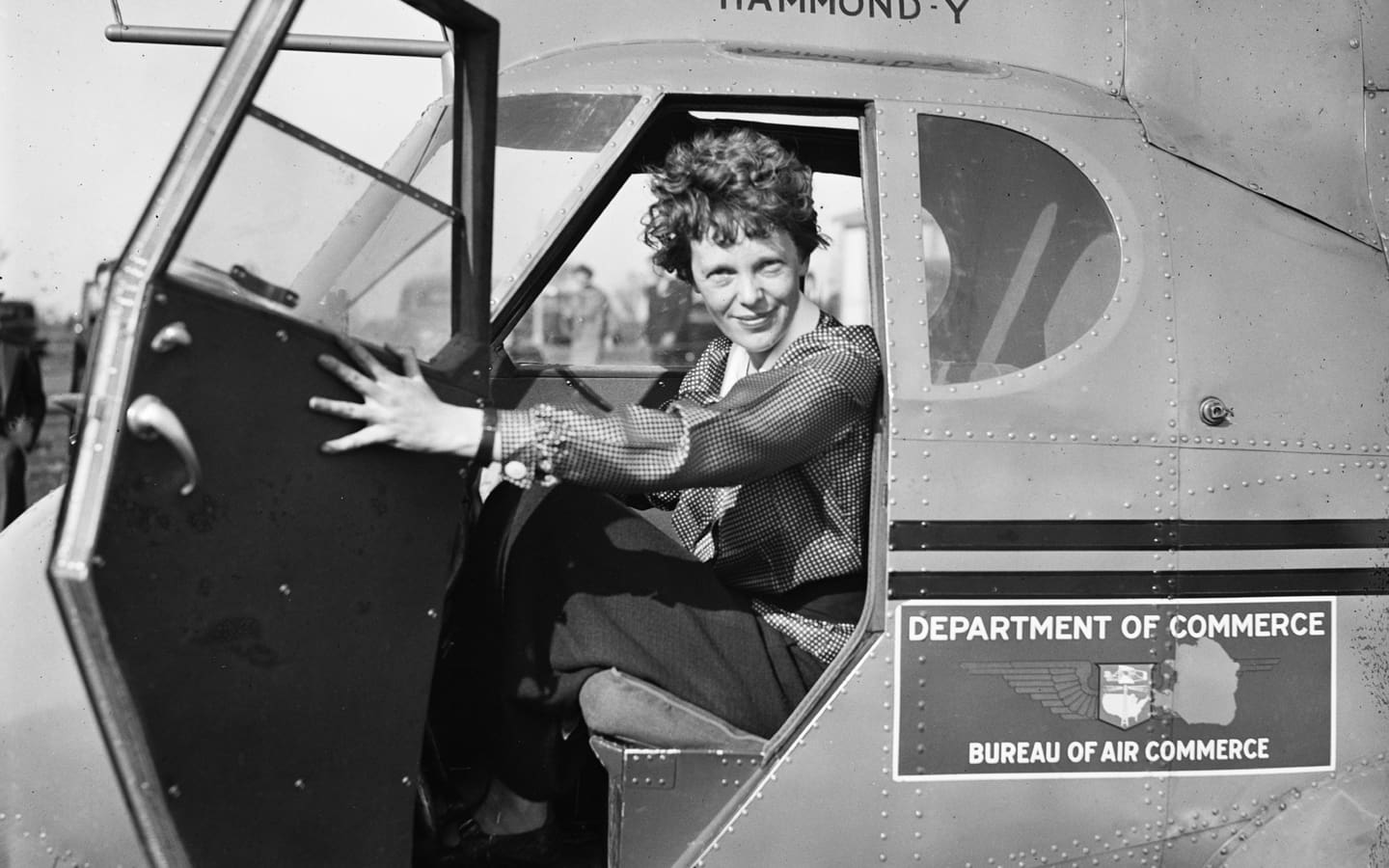In 1937 Amelia Earhart made an ill-fated attempt to be the first woman to fly around the globe. She disappeared without contact. Explorers the world over have searched for her plane. Now, researchers say they’ve found it.
Researchers say they found Amelia Earhardt’s plane, but experts remain skeptical
On July 2, 1937, Amelia Earhart, one of the world’s most celebrated aviators, and her navigator Fred Noonan, disappeared over the Pacific Ocean while attempting to circumnavigate the globe. The US government conducted a 16-day search before the pair was declared lost at sea.
Explorers around the world have made extensive search efforts for her long-lost plane for nearly 90 years. However, no wreckage or definitive evidence of her fate was ever found.
The disappearance of Amelia Earhart remains one of the greatest mysteries in aviation history, sparking numerous theories ranging from crash and sinking to capture by Japanese forces.
Despite ongoing speculation, the true circumstances of her disappearance remain unknown, leaving the fate of Amelia Earhart and Fred Noonan a captivating enigma.
Sonar discovers an anomaly on the ocean floor
In January 2024, a team of underwater archaeologists and experts in marine robotics from Deep Sea Vision announced that they believed they had found Ehrhardt’s long-lost plane.
The ocean exploration company, which is based in Charleston, South Carolina, used sonar imaging to map the ocean floor. The group said they spotted an anomaly in the Pacific Ocean. By measuring the distance from the seabed to the surface with soundwaves, they located something more than 16,000 feet (4,877 meters) that resembles a small aircraft. The team believes the anomaly could be the Lockheed 10-E Electra piloted by Earhart.
“Some people call it one of the greatest mysteries of all time,” Deep Sea Vision CEO Tony Romeo wrote in an Instagram post on January 27, 2024. “I think it actually is the greatest mystery of all time.”
“We have an opportunity to bring closure to one of the greatest American stories ever,” Romeo, a pilot and former US Air Force intelligence officer, added.
Deep Sea Vision made the discovery using an advanced autonomous underwater vehicle (AUV) known as Hugin 6000, which maps the seabed using sonar technology, CNN reported. After scanning more than 5,200 square miles (13,468 square kilometers) of the ocean floor, Deep Sea Vision’s sonar imagery of the anomaly was captured roughly 100 miles (161 kilometers) from Howland Island. This is in the vicinity of the last radio transmission from Earhart.
Experts remain skeptical that Earhart’s plane was found
Dorothy Cochrane, an Aeronautics Department curator at the Smithsonian National Air and Space Museum in Washington DC, is skeptical of the find, BBC reported.
“Photographing the object would greatly assist in identifying it further,” Cochrane said. “I am encouraged that DSV is searching near Howland Island and believe they would like to make another expedition to conduct more research.”
Richard Gillespie, founder of The International Group for Historic Aircraft Recovery, also finds the claim dubious. He’s led 12 expeditions searching for Earhart’s plane, as well as authored several books on the subject. He’s considered a leading authority.
“We know what happened,” Gillespie told BBC, adding that there is abundant evidence” that [Earhart] died on Nikumaroro.
“It is definitely not the Lockheed Electra and it’s not just me that thinks so,” Gillespie said. “Any sonar expert will tell you that one grainy image doesn’t tell you anything.”
Further, Gillespie states that the image doesn’t resemble Earhart’s plane, saying the wings aren’t “swept back.” He asserts the image more closely resembles a U.S. Navy fighter jet.
The story of Amelia Earhart and her disappearance
Amelia Earhart was the first female aviator to fly solo across the Atlantic, doing so in 1928, following the first transatlantic flight by Charles Lindbergh in 1927.
In 1936, Earhart began planning to be the first woman to fly around the world, as well as to set the record for the longest circumnavigation of the globe at 29,000 miles. For the trip, Lockheed Aircraft built a Lockheed 10-E Electra, a 10-passenger plane, to her specifications. Earhart dubbed the plane her “flying laboratory.”
On March 17, 1937, Earhart and a crew of three others took off from Oakland, California, to Honolulu, Hawaii. However, after landing, due to mechanical problems, the rest of the flight was called off, and Harry Manning, her radio operator, dropped out.
Earhart began the second leg of her trip with Fred Noonan as her only crewmember. They made stops in South America, Africa, the Indian subcontinent, and Southeast Asia, then landed at Lae, New Guinea, on June 29, 1937. By this point, they had completed about 22,000 miles of their journey. The remaining 7,000 miles would take them over the Pacific.
Disappearance
On July 2, 1937, Earhart and her navigator Fred Noonan departed from Lae Airfield in New Guinea, headed for Howland Island, a flying time of roughly 20 hours.
The US Coast Guard sent the cutter USCGC Itasca to the island, where it plan to communicate with Earhart’s aircraft via radio. However, the final approach to Howland Island using radio navigation by Noonan was not successful.
The Itasca received strong and clear voice transmissions from Earhart, identifying as KHAQQ. However, it appears she was unable to hear voice transmissions from the ship.
One transmission received on the Itasca radio log stated: EARHART ON NW SEZ RUNNING OUT OF GAS ONLY 1/2 HOUR LEFT CANT HR US AT ALL.
The last known position report by the duo was near the Nukumanu Islands, about 800 miles into the flight.
The weather was cloudy and overcast.
Another message from Earhart said: CLNG ITASCA WE MUST BE ON YOU BUT CANNOT SEE U BUT GAS IS RUNNING LOW BEEN UNABLE TO REACH YOU BY RADIO WE ARE FLYING AT A 1000 FEET
The duo’s last confirmed position was near Howland Island in the Pacific Ocean.





